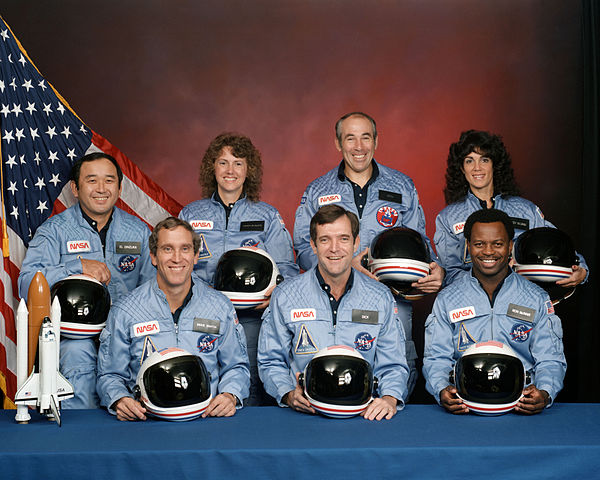Aeronautics isn’t just about the Civil and Military Aircraft that fly all over the world on a daily basis – although this tends to be our main focus, it’s also about any situation where flight is achieved and this can include WIG (Wing in Ground Effect) Aircraft and more importantly for this blog entry – Space.
Space, to paraphrase Star Trek, is one of the ‘final frontier{s}’ of human experience. Only the depths of the oceans have been explored less. It is one of the least hospitable places for human life to attempt to explore. This means those who seek to answer the questions of the wider human race by exploring space – put their lives in great danger, relying on the designs of engineers to keep them safe.
30 years ago today, on the 28th January 1986, one of the most well known of all space related disasters occurred. The NASA Space Shuttle orbiter Challenger broke apart just 73 seconds into its initial lift-off from the Kennedy Space Centre as part of a six day mission STS-51-L. All seven crew members died in the disaster, although the exact timing of their deaths following the initial incident is unclear.
Subsequent investigations pointed to the disintegration of the launch vehicle beginning after an O-ring seal in the right solid rocket booster (SRB) failed during lift-off – this caused a breach in the joint of the SRB it sealed. From this, pressurised burning gas from within the solid rocket motor could reach the outside and damage the external fuel tank and field joints. Separation occurred, leading to structural failure of the external tank. At this point aerodynamic forces broke up the orbiter. Fragments from the incident descended to the Atlantic Ocean floor where they were recovered after a lengthy search and rescue operation.
Investigations into the disaster followed and the Rogers Commission was established to report to President Reagan on the causes of the disaster on Challenger’s 10th mission. The commission discovered the O-ring failure and following further study, attributed it to a design flaw, as it could be too easily compromised by a range of factors, one of which was low temperatures and cold weather. Further, it determined the ‘contributing causes’ that led to such an accident being possible. That both NASA and the contractor, Morton Thiokol, failed to respond adequately to the design flaw. That the launch decision making process was also seriously flawed and that the risk from the design issues was known but that there were no checks and balances to protect from such a decision being made. The disaster lead to the grounding of the Space Shuttle fleet for a period of around 3 years. During this time, changes had to be implemented; safety measures, SRB redesigns and new policies on decision making were all part of this process.
Although these changes were made by NASA following the incident, it is often argued that the changes in the management structure and culture have not been deep or long lasting – an argument levelled at NASA once again following the 2003 Space Shuttle Columbia disaster. Columbia broke up over Texas and Louisiana on re-entry to Earth’s atmosphere following damage caused by foam insulation breaking off the external tank. Investigations led to the conclusion that NASA had failed to learn lessons from the Challenger disaster and that the same “Flawed decision making process” (Columbia Accident Investigation Board; CAIB) still existed.
So 30 years on, what can we still learn from the Challenger disaster? It is commonly used as a case study in engineering – looking at safety in engineering, ethics, whistle-blowing, communications and group decision-making. The engineer who warned about the effect on the O-rings, Roger Boisjoly, was, prior to his death in 2012, a speaker on workplace ethics and is held as an example of honesty and integrity. As engineers, by studying the disaster and the various complications around the event – we can improve our own understanding of safety, management and ethics within our field.



